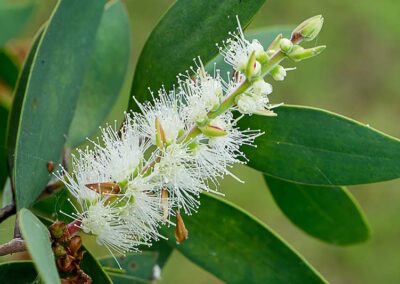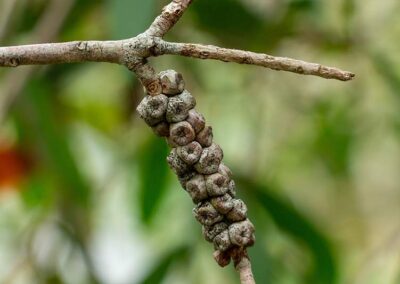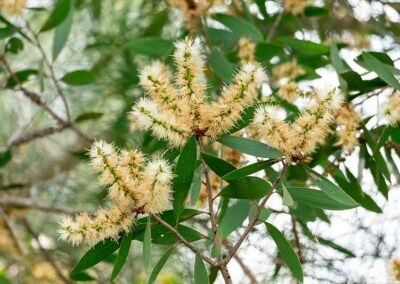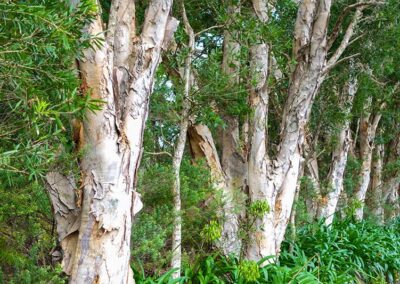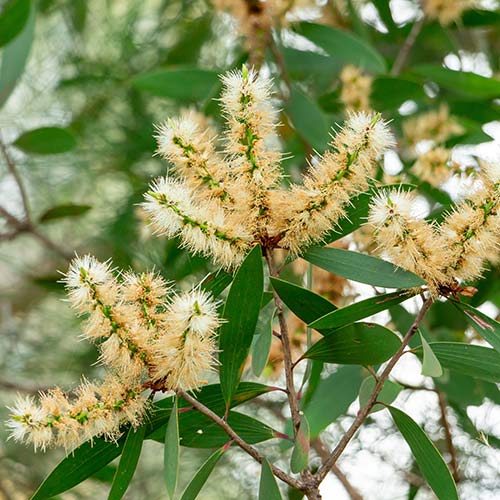
Melaleuca

Pollen Type: Tree
Cross-Reactivity: Eucalyptus, Bahia Grass
HS Allergy Extract: Melaleuca
Family: Myrtaceae
Genus/Species: Melaleuca quinquenervia
Common Names: Broad-leaved Paperbark, paper bark tea tree, punk tree, niaouli
Distribution: Southern Florida.
Locations: Swamps, wet plains
Pollination Method: Wind-pollinated
Pollinating Period: April & August
Description: The Melaleuca tree is a spreading species, Native to Australia and New Guinea, that typically grows to a height of 30′-50′ with a spread of 20′-30′. A thick, papery bark covers the trunk and varies in color from white to beige and grey. The dull grey-green leaves are flat, leathery, lance-shaped to egg-shaped, and arranged alternately. They are typically 2″-5″ long and 0.4″-1″ wide. Individual trees bloom two to five times a year, but noticeable region wide flowering occurs at least twice yearly. Cream or white bottlebrush-like flowers grow in spikes on the ends of branches that continue to grow after flowering. The spikes can also be found in the upper leaf axils and contain 5-18 groups of flowers in threes. They can reach up to 2″ in diameter and 0.8″-2″ long. The petals are around 0.1″ long and fall off as the flower ages. The stamens, which produce pollen, are arranged in 5 bundles around the flower, with 5-10 stamens per bundle, and can be white, cream-colored, or greenish. After flowering, its woody fruit appears as cylindrical capsules clustered spike-like along the branches and about 0.1″-0.2″ long. Each capsule contains many tiny seeds that are released annually. Melaleuca has become naturalized in the Everglades in Florida. Its estimated that a single tree is capable of producing 20 million seeds per year. As a result, the USDA considers it an invasive species in this region.

